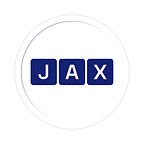What’s wrong with DAI?
by Maryna Trifonova, Head of Content at Jax.Network
DeFi continues to be one of the hottest trends at the moment. Many new projects appear claiming to solve existing problems. This time the DAI stablecoin, developed by MakerDAO, has caught our attention. Let’s see how this technology could make the world a better place.
Overview of DAI
Dai (DAI) is a stablecoin based on the Ethereum blockchain network. It was introduced back in 2015 by the MakerDAO community and was built on the like-named protocol. The stablecoin is pegged to the U.S. dollar and supported by Ether, a native token of the Ethereum platform. However, as Dai is crypto-collateralized, its value is pegged indirectly, meaning that it mainly depends on ETH, BAT, and USDC, with the last two being added only in 2019 to reduce the forthcoming risks of the network.
Limitations of DAI
We don’t mean to bring ants to the picnic, but DAI is not that perfect in reality as it may seem at the first glance. First of all, its so-called decentralization claim evokes a lot of questions due to its pretty much centralized organization. As we already mentioned, Dai added a couple of centralized stablecoins as collateral in abnormally huge amounts, putting the project closer and closer to centralized finance. Has DAI neglected its initial decentralization plan? The answer is obvious. Should the users await more changes and extra regulations? Probably.
But let’s see why MakerDAO decided to add more cryptocurrencies as collateral in the first place. We all remember March 12 of last year which has also become known as Black Thursday. Back then, the price of Ether suddenly fell down inducing an overload of attempting transactions. So investors started to cash out triggering the panic sale. That was enough to set a chain of liquidations of the collateral on the MakerDAO lending platform. But that’s not the worst part. On top of that, attackers managed to steal around $8.3 million in Ether during this fuss. So, even though DAI survived through that, the risk of a flash crash remains. In order to avoid such dramatic outcomes, stablecoins need to be backed by an enormous amount of collateral, which can be a waste of capital.
And finally the problem with the Ethereum network. It’s probably the most important one at the moment. The bottom line is that the smart contracts that run on the Ethereum network are still vulnerable to bugs. In addition to that, the Ethereum network is currently overloaded, which translates into extremely high fees. So the issue of scaling Ethereum will be there for quite a while.
What does Jax.Network offer?
Compared to DAI, Jax coins are non-collateralized and, therefore, completely decentralized, with no asset pegged to them. Our price is market-based, thanks to the unique Jax.Network reward function, so if the demand for transactions rises, more coins are issued, and vice versa. If the price plummets, the number of coins for issuance is reduced. Although in this scheme, the money supply cannot be contracted, mainly due to technical reasons, unless compromising with security, the adjustment between supply and demand can therefore take more time than pegged coins. The issuance depends on two main factors, namely the user transaction demand and the cost structure associated with mining. As you can see, the principle is quite simple. Stability in the purchasing power pegged to electricity costs, and not in value like other pegged or collateralized stablecoins, is one of the reasons why Jax coins can be massively adopted and outcompete existing fiat currencies.
Not to mention, Jax coins are transparent for a third-party audit. That’s one of the most important properties that lie in the basis of blockchain technology and cryptocurrencies, which are built on top of it. In the case of Jax coins, you can pick any account on any shard and easily audit it. All you need to have is a stable Internet connection and a computer.
To wrap it up, we want to say that you need to be very cautious and accurately manage the risks connected to the crypto-collateralized nature of the stablecoin if you intend to use DAI. On the other hand, Jax coins are a great alternative. They are non-collateralized but still stable, transparent, and secure. All of that makes Jax coins perfect for everyday use.
Don’t miss any announcement by subscribing to our social media accounts:
Official Website: https://jax.network
Twitter: https://twitter.com/CommunityJax
Facebook: https://www.facebook.com/network.jax/
Telegram Channel: https://t.me/jax_network
Official Group: https://t.me/jax_chat
